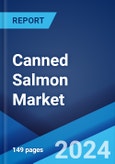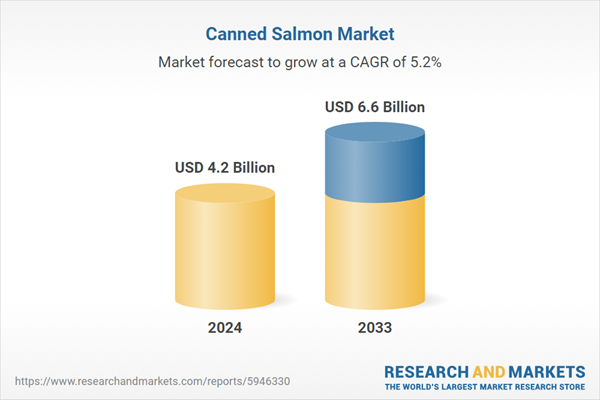Canned salmon refers to salmon that has been cooked, processed, and preserved in a can. It is a convenient and popular way to package and store salmon for extended periods without the need for refrigeration. In this method, harvested salmon is cleaned, gutted, prepared, and cooked, usually through methods such as boiling, steaming, or baking. The cooked salmon is then carefully placed in cans or containers, along with brine or oil, to preserve the flavor and texture of the fish. These cans are then subjected to a heat sterilization process, which eliminates any remaining bacteria, enzymes, or pathogens and ensures the long shelf life of the canned salmon. Canned salmon is available in various forms, including boneless and skinless, bone-in, or with skin intact, and may also include additional ingredients or seasonings for flavor enhancement. In addition, it is a rich source of protein, omega-3 fatty acids, vitamins, and minerals such as calcium and iron. Consequently, tanned salmon is commonly used in a variety of dishes, including salads, sandwiches, and pasta, and as a topping for crackers or toast.
Canned Salmon Market Trends:
The market is primarily driven by the rising awareness among individuals regarding the nutritional benefits of salmon. Salmon is highly regarded for its nutritional value, being rich in omega-3 fatty acids, high-quality protein, vitamins, and minerals. Canned salmon retains many of these nutritional benefits, making it an attractive choice for health-conscious consumers. In addition, the overall demand for seafood products, including canned salmon, has been increasing globally. Factors such as population growth, rising disposable incomes, and changing dietary preferences have contributed to the growing demand for seafood as a source of protein. Besides this, canned salmon can be used in a variety of dishes and casseroles. Its versatility and ability to add flavor and nutrition to various recipes make it an attractive ingredient for home cooks and food service establishments. Moreover, canned salmon is available in various distribution channels, including supermarkets, grocery stores, online platforms, and convenience stores. This wide availability and accessibility contribute to the growth of the market, as consumers can easily purchase canned salmon products. Furthermore, the introduction of flavored and seasoned canned salmon varieties, single-serve packaging options, and convenient ready-to-eat formats is also creating a favorable market outlook across the globe.Key Market Segmentation:
The publisher provides an analysis of the key trends in each segment of the global canned salmon market, along with forecasts at the global, regional, and country levels from 2025-2033. Our report has categorized the market based on type, nature and sales channel.Type Insights:
- Fillet
- Chunk
- Minced
Nature Insights:
- Wild
- Farmed
Sales Channel Insights:
- Hypermarkets and Supermarkets
- Specialty Stores
- Online Channels
- Others
Regional Insights:
- North America
- United States
- Canada
- Europe
- Germany
- France
- United Kingdom
- Italy
- Spain
- Russia
- Others
- Asia Pacific
- China
- Japan
- India
- South Korea
- Australia
- Indonesia
- Others
- Latin America
- Brazil
- Mexico
- Others
- Middle East and Africa
Competitive Landscape:
The report has also provided a comprehensive analysis of the competitive landscape in the global canned salmon market. Detailed profiles of all major companies have been provided. Some of the companies covered include Bumble Bee Foods LLC, Crown Prince Inc., Maruha Nichiro Corporation, Pataya Food Industries Ltd., Peter Pan Seafood Company LLC, Princes Limited (Mitsubishi Corporation), Raincoast Trading, Tassal Group Limited (Cooke Inc.), Thai Union Group PCL, The Canfisco Group, The South Australian Fishermans Co-Operative Limited, Trident Seafoods Corporation, Vital Choice Wild Seafood & Organics, Wild Planet Foods Inc. (Bolton Group S.R.L.), etc. Kindly note that this only represents a partial list of companies, and the complete list has been provided in the report.Key Questions Answered in This Report:
- How has the global canned salmon market performed so far, and how will it perform in the coming years?
- What are the drivers, restraints, and opportunities in the global canned salmon market?
- What is the impact of each driver, restraint, and opportunity on the global canned salmon market?
- What are the key regional markets?
- Which countries represent the most attractive canned salmon market?
- What is the breakup of the market based on the type?
- Which is the most attractive type in the canned salmon market?
- What is the breakup of the market based on nature?
- Which is the most attractive nature in the canned salmon market?
- What is the breakup of the market based on the sales channel?
- Which is the most attractive sales channel in the canned salmon market?
- What is the competitive structure of the global canned salmon market?
- Who are the key players/companies in the global canned salmon market?
Table of Contents
Companies Mentioned
- Bumble Bee Foods LLC
- Crown Prince Inc.
- Maruha Nichiro Corporation
- Pataya Food Industries Ltd.
- Peter Pan Seafood Company LLC
- Princes Limited (Mitsubishi Corporation)
- Raincoast Trading
- Tassal Group Limited (Cooke Inc.)
- Thai Union Group PCL
- The Canfisco Group
- The South Australian Fishermans Co-Operative Limited
- Trident Seafoods Corporation
- Vital Choice Wild Seafood & Organics
- Wild Planet Foods Inc. (Bolton Group S.R.L.)
Methodology

LOADING...
Table Information
| Report Attribute | Details |
|---|---|
| No. of Pages | 136 |
| Published | March 2025 |
| Forecast Period | 2024 - 2033 |
| Estimated Market Value ( USD | $ 4.2 Billion |
| Forecasted Market Value ( USD | $ 6.6 Billion |
| Compound Annual Growth Rate | 5.2% |
| Regions Covered | Global |
| No. of Companies Mentioned | 14 |









